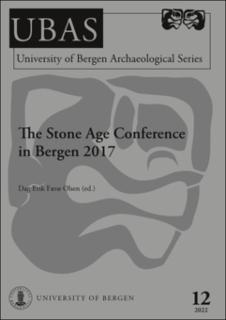The Tananger-hut – A contribution to the diversity of settlement structures in the Early Neolithic in Southwestern Norway
Original version
In: Dag Erik Færø Olsen (ed.) (2022). The Stone Age Conference in Bergen 2017.Abstract
Complex composite structural remains are rarely encountered on sites from the earlier parts of the younger Stone Age (4000–2300 BC) in southwestern Norway. This hut, an Early Neolithic structure unearthed at Tananger on the coast of southwestern Norway is presented in this article. Its architectural elements and associated lithic and macrofossil assemblages suggests that the structure is a hut functioning as a short-term living space. While there are strong indications that this activity dates to the Early Neolithic the results of carbon dating are contradicting. However, there are also problems with this interpretation. Contradicting 14C results challenge the huts age, making it crucial to analyse surrounding archaeological finds and the dwellings constructive elements to give a complete interpretation. I will highlight some of the questions this feature rises concerning function and social significance primarily within the stated period.
This example will therefore highlight and expand our knowledge of Early Neolithic dwellings. Analysis of lithic artefacts and archaeobotanical material from the site provide insight into settlement patterns and the economy in this period. Sheltered from wind by turf walls dug down into the sand this structure gives the impression of representing a short-term living space used primarily for hunting and gathering activities in the Early Neolithic. The Tananger-hut has several similarities regarding shape, size and lithic assemblage with Early Neolithic structures from settlements, in southern Sweden, Denmark as well as other areas of northern Europe where agriculture was the primary means of subsistence.
